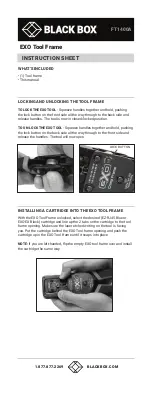
blades whilst coarser saw blades require lower
speeds.
Position 1-2
= low stroke speed (for steel)
Position 3-4
= medium stroke speed (for steel, soft
metal, plastic)
Position 5-6
= high stroke speed (for softwood,
hardwood, soft metal, plastic)
6.4 Setting the pendulum action (Fig. 9/Item 8)
The strength of the pendulum action of the saw
blade (12) can be adjusted using the selector
switch for pendulum action (8).
You can adjust the cutting speed, the cutting
performance and the finish to the workpiece you
wish to saw.
Set the selector switch for pendulum action (8) to one
of the following positions:
Position 0:
No pendulum action
Material:
Rubber, ceramic, aluminium, steel
Please note:
For fine and clean cuts, thin materials
(e.g. sheet steel) and hard materials.
Position 1:
Small pendulum action
Material:
Plastic, wood, aluminium
Please note:
For hard materials
Position 2:
Medium pendulum action
Material:
Wood
Position 3:
Large pendulum action
Material:
Wood
Please note:
For soft materials and sawing along the
grain
The best combination of speed and pendulum action
depends on the material you wish to saw. We
recommend you to make a trial cut on a waste piece
in order to check the ideal settings.
6.5 Making cuts
Ensure that the ON/OFF switch (3) is not
depressed. Only then should you connect the
mains plug to a suitable socket.
Do not switch on the jigsaw until you have fitted a
saw blade.
Use only saw blades that are in perfect condition.
Replace blunt, bent or cracked saw blades
immediately.
Place the saw foot flat on the workpiece you wish
to saw. Switch on the jigsaw.
Allow the saw blade to accelerate until it reaches
full speed. Then slowly move the saw blade along
the cutting line. Only exert gentle pressure on the
saw blade as you do so.
When cutting metal, apply a suitable coolant
along the line you wish to cut.
6.6 Sawing out sections (Fig. 10)
Drill a 10 mm hole in the section you wish to saw out.
Insert the saw blade into this hole and start to saw out
the required section.
6.7 Making parallel cuts
Mount the parallel stop and adjust as required
(see section 5.3).
Observe the instructions in section 6.5.
Cut as shown in Figure 11.
6.8 Making miter cuts
Set the angle on the soleplate (see section 5.4).
Observe the instructions in section 6.5.
Cut as shown in Figure 12.
7. Replacing the power cable
If the power cable for this equipment is damaged, it
must be replaced by the manufacturer or its after-
sales service or similarly trained personnel to avoid
danger.
8. Cleaning, maintenance and ordering
of spare parts
Always pull out the mains power plug before starting
any cleaning work.
8.1 Cleaning
Keep all safety devices, air vents and the motor
housing free of dirt and dust as far as possible.
Wipe the equipment with a clean cloth or blow it
with compressed air at low pressure.
We recommend that you clean the device
immediately each time you have finished using it.
Clean the equipment regularly with a moist cloth
and some soft soap. Do not use cleaning agents
or solvents; these could attack the plastic parts of
the equipment. Ensure that no water can seep
into the device.
8.2 Carbon brushes
In case of excessive sparking, have the carbon
brushes checked only by a qualified electrician.
Important! The carbon brushes should not be rep
laced by anyone but a qualified electrician.
13
GB
Anleitung BT-JS 650 E_SPK1:_ 27.11.2007 8:33 Uhr Seite 13














































